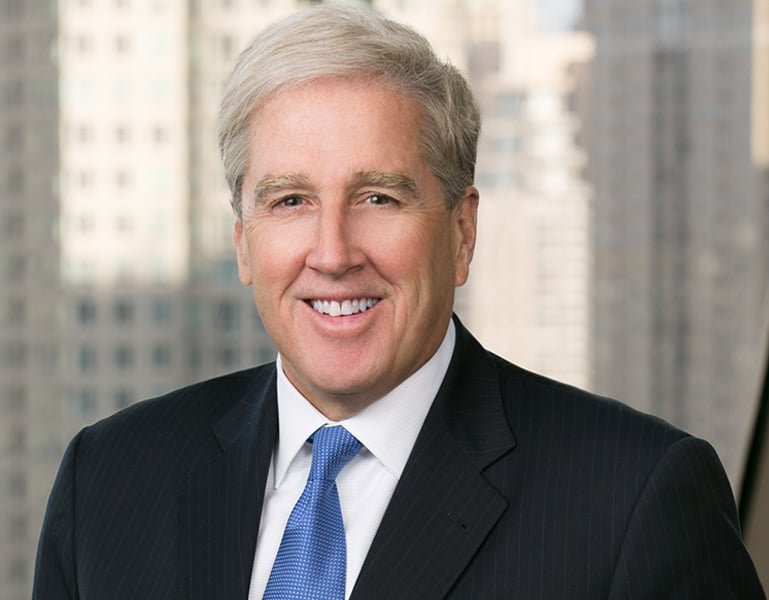Regulatory Relief: It’s About Time
In November 2016, with the election results confirmed, the banking industry was awash in hopes for a more lenient regulatory posture. To date, the industry has seen no reform. However, on March 14, 2018, the Senate passed and sent to the House of Representatives the bipartisan Economic Growth, Regulatory Relief and Consumer Protection Act (S. 2155) (the “Consumer Protection Act”). Below we provide a brief summary of some of the Consumer Protection Act’s major provisions.
Capital Simplification for Qualifying Community Banks. The federal banking agencies are directed to initiate the rulemaking process to develop a “Community Bank Leverage Ratio” of not less than 8 percent and not more than 10 percent for community banks and their holding companies with total consolidated assets of $10 billion or less. Any qualifying community bank or holding company that exceeds the Community Bank Leverage Ratio will be considered to have met the generally applicable capital ratio requirements that are required to be considered well capitalized.
Notwithstanding the foregoing, the applicable federal banking agency may determine that a community bank or its holding company is not a qualifying community bank based upon its risk profile, which must be based upon the consideration of (i) off-balance sheet exposures; (ii) trading assets and liabilities; (iii) total notional derivatives exposures; and (iv) such other factors as the appropriate federal banking agencies determine appropriate.
Small Bank Holding Company Policy Statement. The Consumer Protection Act would adjust the Federal Reserve’s Small Bank Holding Company Policy Statement (the “Policy Statement”) to cover banks with up to $3 billion in consolidated assets, up from the current threshold of $1 billion. Under the Policy Statement, the Federal Reserve does not apply the capital requirements ordinarily applicable to a small bank holding company as long as the subsidiary bank remains well capitalized. The Consumer Protection Act otherwise tracks closely to the current Policy Statement. A qualified bank will only be able to take advantage of the Policy Statement if its total consolidated assets are under $3 billion and the institution (i) is not engaged in significant nonbanking activities either directly or through a nonbank subsidiary; (ii) is not conducting significant off-balance sheet activities (including securitization and asset management or administration) either directly or through a nonbank subsidiary; and (iii) does not have a material amount of debt or equity securities outstanding (other than trust preferred securities) that are registered with the Securities and Exchange Commission. The Federal Reserve is provided discretion in excluding any otherwise qualified institution if such action is warranted for supervisory purposes.
High Volatility Commercial Real Estate (“HVCRE”) Loans. The Federal Deposit Insurance Act would be amended to restrict the ability of federal banking agencies in designating a heightened risk weighting to certain HVCRE loans. Specifically, the federal banking agencies would only be permitted to assign a heightened risk weighting to a HVCRE loan if the loan in question is an “HVCRE ADC loan.”
An “HVCRE ADC loan” is defined as a credit facility secured by real estate or improved real estate that (i) primarily finances, has financed, or refinances the acquisition, development, or construction of real estate; (ii) has the purpose of providing financing to acquire, develop, or improve such real estate into income-producing real estate; and (iii) is dependent upon future income or sales proceeds from, or refinancing of, such real estate for the repayment of such credit facility.
A HVCRE ADC loan does not include a credit facility financing the following:
- the acquisition, development or construction of properties that are (a) one- to four-family residential properties, (b) real estate that would qualify as an investment in community development project or (c) agricultural land;
- the acquisition or refinance of an existing income-producing real estate parcel secured by a mortgage on such property, if the cash flow being generated by the real estate is sufficient to support the debt service;
- commercial real estate projects that (a) have a loan-to-value ratio less than or equal to the maximum supervisory loan-to-value ratio set by the federal banking agencies and (b) the borrower has contributed capital, as defined by the Consumer Protection Act as including a variety of differing payment-types, to the project equal to at least 15 percent of the real estate’s appraised value; and/or
- any loan made prior to January 1, 2015.
Volcker Rule—Community Banks. In general, the Volcker Rule prohibits a banking institution from (i) engaging in proprietary trading or (ii) acquiring or retaining any equity, partnership or other ownership interest in a hedge fund or a private equity fund. Pursuant to the Consumer Protection Act, the Volcker Rule would be amended to exempt from its restrictions community banks with total consolidated assets of less than $10 billion and which have trading assets and liabilities constituting less than 5 percent of total consolidated assets.
Home Mortgage Disclosure Act (“HMDA”). HMDA is to be amended to provide exemptions from certain of HMDA’s enhanced disclosure requirements for financial institutions that originate fewer than (i) 500 closed-end mortgage loans or (ii) 500 open-end lines of credit in each of the two preceding calendar years.
However, this exemption will not otherwise be available for financial institutions that have received a rating of “needs to improve” during each of its two most recent examinations or a rating of “substantial noncompliance” on its most recent examination under the Community Reinvestment Act.
Short Form Call Reports. The applicable federal banking agencies are directed to issue regulations that would provide reduced and short form reporting for insured depository institutions with less than $5 billion in total consolidated assets and which meet certain other criteria as determined by the federal banking agencies.
Eighteen-Month Regulatory Examination Cycle. The Consumer Protection Act would raise the consolidated asset threshold from $1 billion to $3 billion for an institution to qualify for an 18-month examination cycle.
Federal Savings Association Charter Flexibility. Federal savings associations with less than $30 billion in total assets could elect to operate as a “Covered Savings Association.” Covered Savings Associations would have the same rights and privileges as national banks.
Enhanced Prudential Standards. The $50 billion asset threshold for enhanced prudential standards is to be increased to $250 billion. In addition, bank holding companies with total assets between $50 billion and $100 billion would be exempt from enhanced prudential standards immediately upon the Consumer Protection Act’s enactment. Bank holding companies with total assets larger than $100 billion but below $250 billion would be exempt 18 months after enactment. The Federal Reserve would have the authority to exempt bank holding companies with assets between $100 billion and $250 billion prior to the end of that 18-month period.
Treatment of Certain Municipal Obligations. For purposes of the Liquidity Coverage Ratio regulations, municipal obligations of a state, agency, political subdivision or instrumentality of a state will be treated as a “high-quality” liquid asset, provided that on the date of calculation, such obligation was (a) liquid and readily marketable and (ii) of investment grade.
To view the full text of the Consumer Protection Act, click here.
For more information about this Seventh Circuit opinion, please contact James M. Kane at +1 (312) 609 7533, Daniel C. McKay, II at +1 (312) 609 7762, James W. Morrissey at +1 (312) 609 7717, Jennifer Durham King at +1 (312) 609 7835, Juan M. Arciniegas at +1 (312) 609 7655, Lisa M. Simonetti at +1 (424) 204 7738, Mark C. Svalina at +1 (312) 609 7741 or your Vedder Price attorney.
Vedder Thinking | Articles Regulatory Relief: It’s About Time
Newsletter
March 16, 2018
In November 2016, with the election results confirmed, the banking industry was awash in hopes for a more lenient regulatory posture. To date, the industry has seen no reform. However, on March 14, 2018, the Senate passed and sent to the House of Representatives the bipartisan Economic Growth, Regulatory Relief and Consumer Protection Act (S. 2155) (the “Consumer Protection Act”). Below we provide a brief summary of some of the Consumer Protection Act’s major provisions.
Capital Simplification for Qualifying Community Banks. The federal banking agencies are directed to initiate the rulemaking process to develop a “Community Bank Leverage Ratio” of not less than 8 percent and not more than 10 percent for community banks and their holding companies with total consolidated assets of $10 billion or less. Any qualifying community bank or holding company that exceeds the Community Bank Leverage Ratio will be considered to have met the generally applicable capital ratio requirements that are required to be considered well capitalized.
Notwithstanding the foregoing, the applicable federal banking agency may determine that a community bank or its holding company is not a qualifying community bank based upon its risk profile, which must be based upon the consideration of (i) off-balance sheet exposures; (ii) trading assets and liabilities; (iii) total notional derivatives exposures; and (iv) such other factors as the appropriate federal banking agencies determine appropriate.
Small Bank Holding Company Policy Statement. The Consumer Protection Act would adjust the Federal Reserve’s Small Bank Holding Company Policy Statement (the “Policy Statement”) to cover banks with up to $3 billion in consolidated assets, up from the current threshold of $1 billion. Under the Policy Statement, the Federal Reserve does not apply the capital requirements ordinarily applicable to a small bank holding company as long as the subsidiary bank remains well capitalized. The Consumer Protection Act otherwise tracks closely to the current Policy Statement. A qualified bank will only be able to take advantage of the Policy Statement if its total consolidated assets are under $3 billion and the institution (i) is not engaged in significant nonbanking activities either directly or through a nonbank subsidiary; (ii) is not conducting significant off-balance sheet activities (including securitization and asset management or administration) either directly or through a nonbank subsidiary; and (iii) does not have a material amount of debt or equity securities outstanding (other than trust preferred securities) that are registered with the Securities and Exchange Commission. The Federal Reserve is provided discretion in excluding any otherwise qualified institution if such action is warranted for supervisory purposes.
High Volatility Commercial Real Estate (“HVCRE”) Loans. The Federal Deposit Insurance Act would be amended to restrict the ability of federal banking agencies in designating a heightened risk weighting to certain HVCRE loans. Specifically, the federal banking agencies would only be permitted to assign a heightened risk weighting to a HVCRE loan if the loan in question is an “HVCRE ADC loan.”
An “HVCRE ADC loan” is defined as a credit facility secured by real estate or improved real estate that (i) primarily finances, has financed, or refinances the acquisition, development, or construction of real estate; (ii) has the purpose of providing financing to acquire, develop, or improve such real estate into income-producing real estate; and (iii) is dependent upon future income or sales proceeds from, or refinancing of, such real estate for the repayment of such credit facility.
A HVCRE ADC loan does not include a credit facility financing the following:
- the acquisition, development or construction of properties that are (a) one- to four-family residential properties, (b) real estate that would qualify as an investment in community development project or (c) agricultural land;
- the acquisition or refinance of an existing income-producing real estate parcel secured by a mortgage on such property, if the cash flow being generated by the real estate is sufficient to support the debt service;
- commercial real estate projects that (a) have a loan-to-value ratio less than or equal to the maximum supervisory loan-to-value ratio set by the federal banking agencies and (b) the borrower has contributed capital, as defined by the Consumer Protection Act as including a variety of differing payment-types, to the project equal to at least 15 percent of the real estate’s appraised value; and/or
- any loan made prior to January 1, 2015.
Volcker Rule—Community Banks. In general, the Volcker Rule prohibits a banking institution from (i) engaging in proprietary trading or (ii) acquiring or retaining any equity, partnership or other ownership interest in a hedge fund or a private equity fund. Pursuant to the Consumer Protection Act, the Volcker Rule would be amended to exempt from its restrictions community banks with total consolidated assets of less than $10 billion and which have trading assets and liabilities constituting less than 5 percent of total consolidated assets.
Home Mortgage Disclosure Act (“HMDA”). HMDA is to be amended to provide exemptions from certain of HMDA’s enhanced disclosure requirements for financial institutions that originate fewer than (i) 500 closed-end mortgage loans or (ii) 500 open-end lines of credit in each of the two preceding calendar years.
However, this exemption will not otherwise be available for financial institutions that have received a rating of “needs to improve” during each of its two most recent examinations or a rating of “substantial noncompliance” on its most recent examination under the Community Reinvestment Act.
Short Form Call Reports. The applicable federal banking agencies are directed to issue regulations that would provide reduced and short form reporting for insured depository institutions with less than $5 billion in total consolidated assets and which meet certain other criteria as determined by the federal banking agencies.
Eighteen-Month Regulatory Examination Cycle. The Consumer Protection Act would raise the consolidated asset threshold from $1 billion to $3 billion for an institution to qualify for an 18-month examination cycle.
Federal Savings Association Charter Flexibility. Federal savings associations with less than $30 billion in total assets could elect to operate as a “Covered Savings Association.” Covered Savings Associations would have the same rights and privileges as national banks.
Enhanced Prudential Standards. The $50 billion asset threshold for enhanced prudential standards is to be increased to $250 billion. In addition, bank holding companies with total assets between $50 billion and $100 billion would be exempt from enhanced prudential standards immediately upon the Consumer Protection Act’s enactment. Bank holding companies with total assets larger than $100 billion but below $250 billion would be exempt 18 months after enactment. The Federal Reserve would have the authority to exempt bank holding companies with assets between $100 billion and $250 billion prior to the end of that 18-month period.
Treatment of Certain Municipal Obligations. For purposes of the Liquidity Coverage Ratio regulations, municipal obligations of a state, agency, political subdivision or instrumentality of a state will be treated as a “high-quality” liquid asset, provided that on the date of calculation, such obligation was (a) liquid and readily marketable and (ii) of investment grade.
To view the full text of the Consumer Protection Act, click here.
For more information about this Seventh Circuit opinion, please contact James M. Kane at +1 (312) 609 7533, Daniel C. McKay, II at +1 (312) 609 7762, James W. Morrissey at +1 (312) 609 7717, Jennifer Durham King at +1 (312) 609 7835, Juan M. Arciniegas at +1 (312) 609 7655, Lisa M. Simonetti at +1 (424) 204 7738, Mark C. Svalina at +1 (312) 609 7741 or your Vedder Price attorney.
Professionals
-
Services



